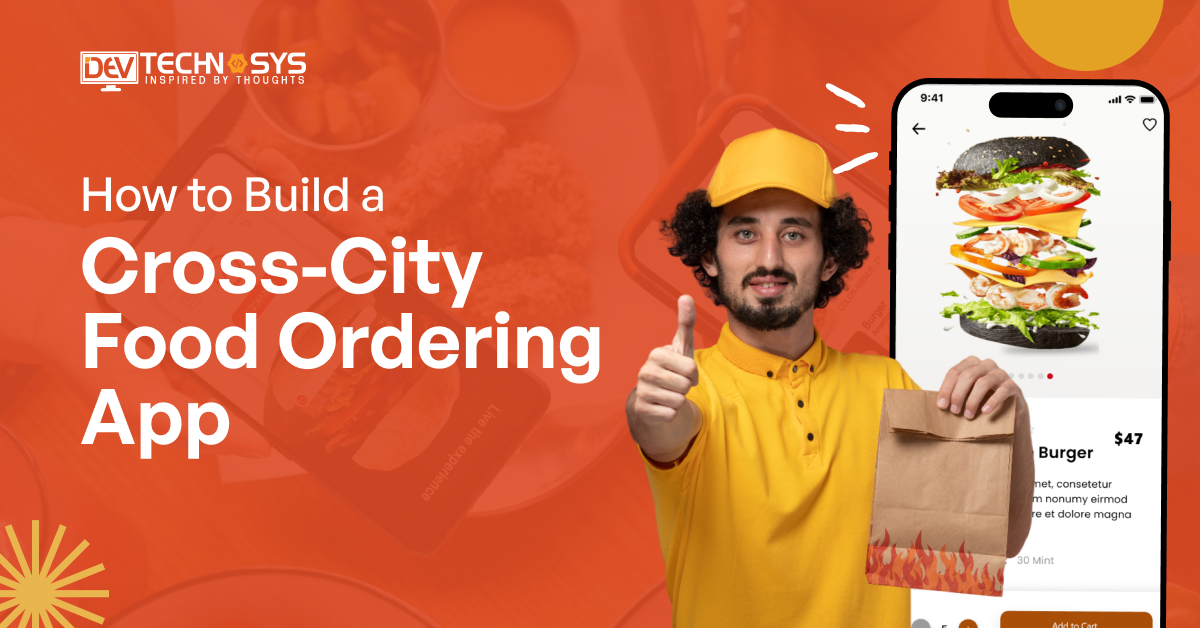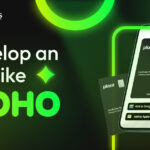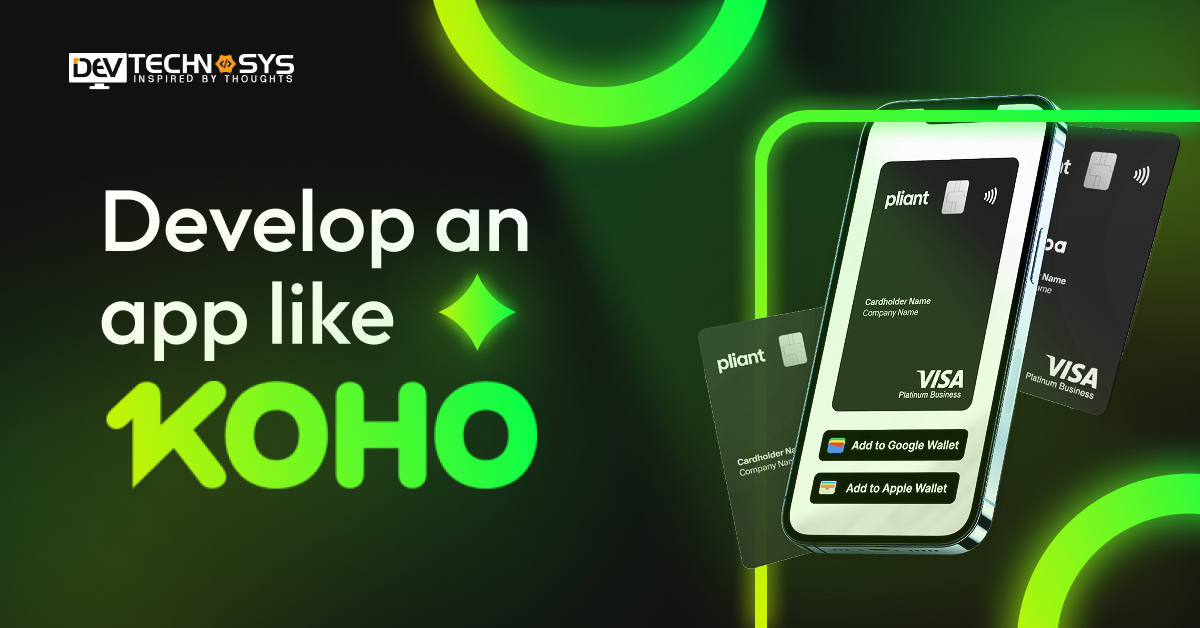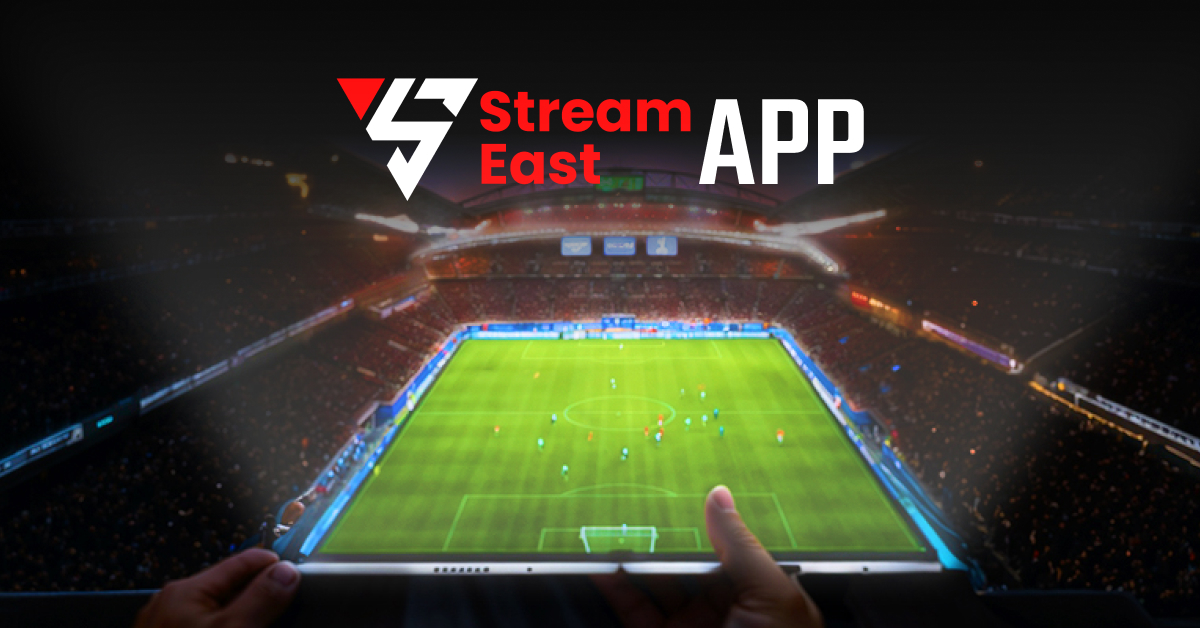Nowadays, technology has changed the way people order food. Cross-city food ordering app development is an emerging yet profitable business opportunity that connects customers with restaurants in different cities. This allows customers to order and enjoy their food with just a few clicks.
With the growing demand for efficient and convenient food delivery services, investing in a cross-city food ordering application can be a smart move for entrepreneurs looking to capitalize on this trend. In a study, I found that the online food delivery sector would generate US$1.20 trillion in revenue by 2024. With a predicted 9.04% compound annual growth rate (CAGR 2024–2029), the market is likely to reach US$1.85 trillion by 2029.
This data depicts how investing in innovative mobile app development for food delivery can benefit businesses. So, if you are also an entrepreneur who wants to build a cross-city food ordering app, this blog is for you.
Quick Summary: Learn how to create a cross-city food ordering app, its cost, features, types, and tech stack used. Also, know different types of cross-city food ordering apps and how investors can earn money with the apps.
Introduction of the Cross-City Food Ordering Apps
Cross city is a food ordering application that connects food lovers with the best restaurants across cities. Whether users are craving a local delicacy from any nearby town or a specialty dish from another city, these apps bring diverse culinary experiences to the user’s doorstep.
The app allows users to browse menu, and palace orders and have their favorite dishes delivered right to their doorstep. This innovative service has expanded the dining choice, making it easy to experience different cuisines and special dishes from across the region.
Market Analysis of Food-Delivery App
Meal Delivery – Worldwide
- Global revenue from the meal delivery business is expected to reach US$424.50 billion by 2024.
- With a predicted compound yearly growth rate (CAGR 2024–2029) of 3.62%, the market is anticipated to reach a value of US$507.00 billion by 2029.
- It is anticipated that 2.5 billion people will be using meal delivery services by 2029.
- The user penetration rate is anticipated to have increased to 30.7% by 2029 from its forecasted 26.6% in 2024.
- An estimated US$205.80 is the average revenue per user (ARPU).
Number of users of the online food delivery market worldwide from 2018 to 2028 by segment
(in millions)
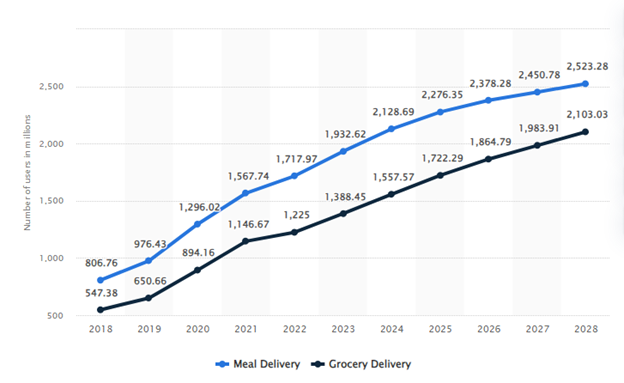
Source: Statista
- The total number of users across all categories is expected to increase significantly in 2028. The pattern shown from 2018 to 2028 will be sustained for the duration of the predicted period.
- Indicator levels are rising steadily for every section. Remarkably, in 2028, the meal delivery segment reaches its peak value of 2.5 billion users.
How Do Cross-City Food Ordering Apps Work?
Now that you have learned exactly what the cross-city food ordering app is and how its market is growing rapidly, you want to invest in on demand app development. However, do you know how cross-city food ordering apps work? If you know, then it’s good, but if you are unaware of this, take a look at this:
1. Selection
Users browse different restaurants in different cities, looking for their regional specialties or iconic dishes. This allows them to experience authentic and unique flavors from afar without leaving their home.
2. Ordering
Users order their favorite dishes just like other regular food delivery apps. However, users also need to consider high chargers because of longer distances and the premium services offered by restaurants to ensure food quality during transit.
3. Packing
Cross-city food ordering apps focus on special packaging designed to maintain the food quality and temperature during its extended journey. This ensures that food arrives fresh and in good condition, enhancing user experience.
4. Logistic
Inter-city delivery relies on partner services or established courier networks to transport the food quickly and efficiently. These logistics solutions are optimized to handle long-distance deliveries while preserving the integrity of the user’s food order.
5. Tracking
Users monitor their order’s progress in real time as it travels from restaurants across another city to their doorstep. This provides users with updates and peace of mind about the status of the food that has been ordered.
6. Delivery
Expect longer wait times compared to regional local deliveries, as the food has to travel farther. Certain apps offer next-day delivery options, ensuring the user’s food arrives on time and allowing for the extra time needed for intercity travel.
Benefits of Developing the Cross-City Food Ordering Apps
If you are a food business and want to transform the food delivery landscape, investment in the top food delivery apps is the best option. I will not just broaden your market reach but also enhance the customer experience. If you want to know more about why you should invest in a cross-city food ordering app development, consider the following points:
1. Increased Customer Base
With the food delivery website development, you can tap into completely new cut-off policies in neighboring cities. Food enthusiasts can explore faraway restaurants while residents gain access to different cuisines that they need help finding locally. Hence, this will broaden your market.
2. Enhanced Brand Awareness
Cross-city reach translates to increased brand recognition. Foodies in new cities can discover new restaurants, boost brand visibility, and potentially grab your attention, making them visit your physical location in the future. This will benefit your business significantly.
3. Boost in Orders and Revenue
If you build a cross-City food ordering app, more customers will come. As a result potential for a substantial order and revenue increases. You can offer a wide selection, enabling you to cater to diversity, leading to larger order sizes and higher overall sales.
4. Improved Customer Loyalty
With progressive web apps development, you can foster customers’ loyalty by facilitating a personalized and convenient ordering experience. Moreover, targeted promotions and loyalty programs also enhance customer retention.
5. Data-driven Marketing Opportunities
With these apps, businesses can collect valuable customer data on order habits and preferences across different locations. Hence, this allows for targeted marketing campaigns, promotions, and menu adjustments specific to different cities’ tastes,
Working with Dev Technosys for our cross-city food ordering app development was an exceptional experience for us. The company has brought our dream to life with its commitment to innovation and quality work. I highly recommend Dev Technosys to build multi-city food delivery platform.
John Smith
Key Steps to Build a Cross-City Food Ordering App
Now, let’s focus on the most important section of this blog- how to develop a cross-city food ordering app. No doubt the iPhone or android app development is quite a straightforward process. However, it requires careful planning. Hence, here is a step-by-step guide to help you in a successful app development.
1. Conduct Market Research
Start your food ordering app development journey by understanding the market. You must identify users’ needs, expectations, preferences, and behavior across different cities and trends in the latest market. Also, look out for your competitors to know how they operate a business, what is good in their working style, and where they could improve. Learn from their mistakes and fill the market gaps, if any. Hence, it will help you build a cross-city food ordering app.
2. Choose the Best Tech Stack
Choosing a platform is one of the most significant steps in creating a food ordering app. You have to decide whether your food ordering app will be we-based—native or hybrid. Moreover, you are also responsible for choosing the most suitable tech stack for your app development. If you are unfamiliar with the different tech stacks or which technology stacks must be used for your app development, you can get help from a food delivery app development company with a vast knowledge of tech stacks, including programming, framework, database, and so on.
3. Craft an Intuitive UI/UX
Now, focus on your mobile app design services, which are critical to user retention. Craft an easy-to-use and visually appealing interface that simplifies the food rendering. Also, incorporate location-based search, personalized recommendations, and real-time tracking to enhance user engagement. A user-centric design strategy can improve the user experience and increase the likelihood that your food-ordering app will succeed in the future.
4. Develop the App
Now, the development process of a food ordering app involves various critical tasks, such as frontend development to design user interfaces and backend development to implement the app’s logic and server requirements. It also requires integration with third-party services like mapping, payment gateways, geolocation APIs for precise delivery tracking, and many more. Moreover, ask the food ordering app development company to ensure your app supports key functionalities like user authentication, order replacement, menu browsing, etc.
5. Testing and Quality Assurance
Let’s move on to another critical stage of the food ordering app development process—testing. Testing is vital when developing an app, ensuring that the app can function smoothly without any technical issues. However, for a successful native or hybrid app development, you must conduct various tests, including integration, unit, and user acceptance tests, which help identify bugs and errors.
6. Launching and Marketing
Once your app has passed all the testing phases, be prepared to launch it on different app stores. This includes creating a thought marketing plan incorporating branding, social media interaction, offline-online promotion, and collaboration with nearby eateries. You can also offer discounts or promotions to attract early users and collect initial feedback.
7. Provide Continuous Support and Upgrades
Your work is not done with the app launch. For long-term success and survival in the market, you are responsible for keeping your app updated. For this, monitor your food ordering app continuously so that if any bug or glitch is found, it can be resolved immediately.
Moreover, you are advised to offer customer support to address issues timely. Keep an eye on the latest market trends and update your food ordering app accordingly.
Must-have Features of a Cross-City Food Ordering App
Well, you have decided to make a cross-city food ordering app. However, do you know how to elevate the dining experience for users, ensuring the success of your food app? It all depends on the food delivery app features you provide users with. If you want to be familiar with such features, here are some of them:
1. Customer Panel
| Features | Description |
| Easy User Registration | Ensure registration is quick and simple and can be done through social media or email. |
| Placing an Order | Order must be easy for users. Your app should display the total cost, including a delivery fee, in the cart with weather information such as service fees, tax, etc. |
| Quick Payment | Build a cross-city food ordering app that offers users multiple payment options, such as credit cards, debit cards, cash on deliveries, and more. |
| Real-time Tracking | This feature allows users to get updates on their ordered food, whether preparing, packing, or food on the way. This enables users to monitor their order throughout. |
| Customizing Orders | With this feature, customers can ask the restaurants to adjust their options. For instance, if someone is allergic to a specific food item, they can remove it from the food. |
2. Restaurant Panel
| Features | Description |
| Admin Dashboard | This feature ensures access to different management tools, such as controlling delivery orders, public data, and other content types. |
| Order Management | Build a cross-city food ordering app that helps restaurants track orders in real-time. The app can contain information, including order status and whether an order is ready, delayed, or canceled. |
| Receiving Payments | Let restaurants receive the payment once the order is placed. This feature is critical for guaranteeing transaction fairness. |
| Content Management | create a delivery service app that allows restaurants to edit public information such as their name, address, working hours, dish prices, delivery rates, menus, videos, and photos. |
| Customer Support | With this feature, restaurants can track customer’s concerns via live chat. This enables the restaurant to receive customers’ queries and quickly answer them. |
3. Delivery Partner Panel
| Features | Description |
| Registration | Build a cross-city food ordering app that allows delivery partners easy registration via password email or social media accounts. |
| Profile Management | With this feature, delivery partners can manage or change their working hours, photos, and other things. |
| GPS Support | Ensure that users can deliver the food to the correct address without getting a list on the way. It ensures a seamless user experience while using the app. |
| In-app Messaging | Hire mobile app developers, to install this feature as it lets the delivery partner communicate with the customers regarding the order status and other information. |
| Order Management | Build a cross-city food ordering app, enabling delivery partners to view, accept, or reject the orders. |
Types of On-Demand Food Delivery Apps
On-demand food ordering apps have changed how customers eat, offering different options to satisfy any craving. Here is a breakdown of the main categories that you can consider for your for-ordering app:
1. Restaurant-to-consumer Delivery
This is a classic model used by restaurants that provides a digital version of their restaurants. With this type of app, users can order directly from their favorite restaurant. Such food ordering apps offer a range of eateries and smoothly handle the entire delivery process.
2. Platform-to-consumer Delivery
This aggregator model has already acquired the food delivery market by facilitating services at consumers’ convenience. The app acts as a middleman that connects users with different restaurants. the apps provide users with a user-friendly interface to browse menus and place orders across different restaurants.
3. Grocery Delivery Apps
These apps are not strictly for prepared meals. Grocery delivery apps like Peapod or Instacart can be lifesavers when you need ingredients to make your recipes. The apps allow users to order groceries online from nearby stores and deliver them straight to their doorstep.
Cost Analysis to Build a Cross-City Food Ordering App
Well, you want to build a cross-city food-ordering app; however, have you ever thought about what the food delivery app development cost? There is no one-word answer to this question. However, building a cross-city food-ordering app requires an investment between $9000 and $28000.
You should know that the cross-city food ordering app development cost is flexible and can change because of factors such as the app’s design, features, functions, and many more. Similarly, the level of your app’s complexity can also impact its cost, as mentioned below:
Cost to Build a Cross-City Food Ordering App
| Cross-City Food Ordering App Development
|
Estimated Cost | Time Frame |
| Simple Cross-City Food Ordering App Development
|
$9000 – $15000 | 3 to 6 Months |
| Medium-Complex Cross-City Food Ordering App Development
|
$15000 – $22000 | 6 to 9 Months |
| High-Complex Cross-City Food Ordering App Development
|
$28000+ | 10+ Months |
Furthermore, apart from the cost to build a cross-City food ordering app, also consider the food delivery app maintenance. On average, the food delivery app maintenance cost can range from 15 to 20 % of the overall app development cost.
Tech Stack for Cross City Food Ordering App Development
As you want to build a cross-city food ordering app, you must ensure to choose the most suited technology stack as it majorly contributes to the app’s success. However, most businesses don’t have any knowledge about the track stack. So, if you are one of them, consider the following tech stack table for a successful Android or iPhone app development:
| Component | Technologies |
| Frontend | React Native, Flutter, Swift, Kotlin |
| Backend | Node.js, Java (Spring Boot)
Python (Django/Flask), |
| API Integration | GraphQL, RESTful APIs, SOAP |
| Database | SQLite, PostgreSQL, MySQL, MongoDB, Firebase |
| Analytics | Google Analytics, Firebase Analytics |
| Authentication | OAuth, JWT |
| Push Notifications | Apple Push Notification Service, Firebase Cloud Messaging |
| Version Control | Git, GitHub, Bitbucket |
| Deployment | Apple App Store, Google Play Store, TestFlight, Firebase App Distribution |
How Food Delivery Apps Make Money: Choosing Monetization Strategy
Are you wondering how can you generate revenue from cross-city food ordering app development? By adopting the right app monetization strategy, you can create multiple income streams while delivering value to the users. Look at the different strategies you can employ with the Android or iPad app development:
| Monetization Strategy | Description | Benefits |
| Commission Fees | Charger a percentage from restaurants on each order | Steady revenue stream |
| Subscription Plan | Offer premium services in exchange of a monthly fee | Enhanced customer loyalty |
| In-app Advertising | Sell ad space to brands adn restaurants | Additional revenue |
| Delivery Charges | Charge a fee from customers for each delivery | Direct income from the users |
| Promotional Partnership | Collaborate with restaurants for excellent deals | Shared marketing and increased customer engagement |
Wrapping Up!
This blog has discussed how cross-city food ordering or pizza delivery app development can provide a lucrative business opportunity. With the efficiency and convenience it offers to both restaurants and customers, the app can change the way customers order and enjoy their favorite dishes from different cities. Businesses can harness the power of advanced technology and cater to the today’s customers’ changing needs, ensuring the success of the food ordering app.
If you also want to build a cross-city food ordering app, hiring a mobile app development company like Dev Technosys would be better. We at Dev Technosys are known for being committed to innovation. Our team of dedicated developers ensures the success of the client’s projects.
Frequently Asked Questions
1. How Much Does It Cost to Build a Multi-city Food Delivery Platform?
The mobile app development cost can vary from $9000 to $28000. This cost can also change based on your app’s design, features, complexity, and other factors. The app development team, their location, and experience also impact the cost.
2. How Long Does It Take to Build a Cross-City Food Ordering App?
The cross-city food app development timelines can be 4 to 10 months, spending on the complexity features you want to install and the size of the hired development team. If you have any special requirements for your app, the time can be around one year.
3. How Can I Ensure Success In The Food Delivery World?
You can ensure success in the food delivery world in the following ways:
- Understand the market
- Quality partnership
- User-centric design
- Marketing strategy
- Efficiency logistics
4. How Can A Cross-city Food Ordering App Ensure Food Quality And Safety During Delivery?
Ensure the food quality and safety in the following ways:
- Reliable delivery partners
- Real-time tracking
- Training
- Food handling protocols
- Feedback system
5. How Can A Cross-City Food Ordering App Ensure Data Security And User Privacy?
Adopt the following techniques for data security and user privacy:
- Secure authentication
- Regular security audits
- Clear privacy policies
- Access control
- Data protection compliance
